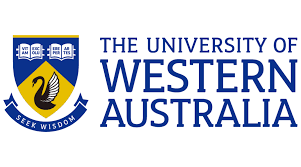University of Western Australia: Bright future as UWA moves to become energy neutral
The University of Western Australia is on track to become the first university in WA – and one of a handful of universities nationally – to become energy neutral by 2025.
UWA has entered into an agreement with Synergy to invest in the supply of renewable electricity from Bright Energy Investments’ Warradarge Wind Farm in WA’s Mid West town of Eneabba.
And by 2025, all of UWA’s expected electricity needs from the grid will be offset by electricity produced from renewable sources, principally the Warradarge Wind Farm.
The shift to renewables is part of the Energy Smart Campus initiative, which uses the Crawley campus as a ‘living laboratory’, in which everyone is invited to have a stake in the energy future of the site, from reducing consumption to developing emerging technologies.
Led by the University’s Campus Management team, which includes Principal Engineer Stuart Downes and Energy and Sustainability Manager Dr Geraldine Tan, the initiative brings together teaching, research and knowledge from professional sectors.
Dr Tan emphasised the importance of integrating the University’s campus operations with its expertise in teaching, research and engagement.
“There is an opportunity to use the campus as a testbed which, if done collaboratively, can benefit operations as well as enhance the teaching and research offerings of the University.”
Energy and Sustainability Manager Dr Geraldine Tan
“The University already has a range of exciting research projects that can be applied on campus, from the introduction of electric vehicle fast charging stations, to growing battery industries in Australia and finding better ways to heat and cool buildings.”
UWA’s energy reporting platform, developed by former UWA data scientist Dr Jason Hamer, provides information on the electrical consumption of buildings, electrical generation from solar photovoltaics and information on the central thermal energy system (for air conditioning).
Dr Hamer said the platform had a sophisticated deep-learning forecast model that could predict the campus energy load at 30-minute intervals one day in advance, with an accuracy of 96 per cent.
“This deep-learning model is constantly adjusting to account for data glitches and anomalies, such as the COVID-19 lockdowns,” Dr Hamer said.
“It enables the University to make operational decisions ahead of time, and could eventually be used to automate some processes, creating a self-operating and self-learning campus.”

